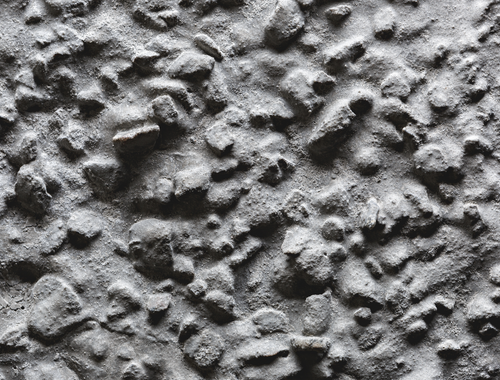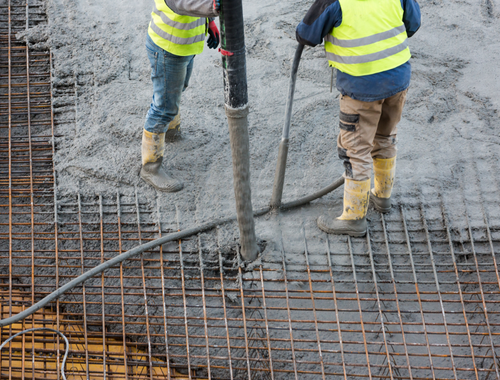Difference Between Concrete Curing and Sealing
It’s quite common for concrete to crack, even when placed correctly. The thing is concrete expands and contracts with temperature. Curing is done to provide adequate moisture, temperature, and time to the environment where concrete has been placed. So, when you spray a compound on concrete it’s referred to as curing yet other times it’s called sealing. Actually sealing is done to protect it from surface damage staining and corrosion. The terms curing and sealing are most commonly and widely used in the concrete industry. In fact, there are tons of products out there on the market with the term cure and seal on the label, and most of them do exactly that. But both are not the same. Keep reading to know more.

What is curing?
Curing is very important in providing strength and durability to concrete, allowing it to achieve the desired properties for its intended use. Curing can be as simple as spraying water on the concrete surface after it has initially hardened. It is done to prevent or replenish the loss of necessary moisture during the initial stages of hydration. The most common way to do this is to keep the exposed surface completely moist by wrapping it with an impermeable membrane. This membrane prevents the premature evaporation of water in the mix before the concrete has had ample time to cure perfectly. It maintains the moisture inside the freshly finished concrete within a proper temperature range. Another common way to do this is by spraying water with a hose after the surface has initially settled.

What is sealing?
Concrete sealing is done to protect the concrete from outside factors such as weather damage like snow, ice, grease and dirt and corrosion. A chemical coating is applied over the finished surface of the concrete flatwork to seal the concrete. The most important thing to note is that sealing is done while the concrete is still curing so that it perfectly absorbs into the surface similar to painting. Sealing is applied to cured, dry concrete as a maintenance procedure to prevent penetration of water, aggressive solutions. Sealing was traditionally done by applying a liquid sealer, either by spraying over the concrete surface. Sealers are low-viscosity, water or solvent based compounds that are typically applied by low-pressure spray on the hardened concrete surface. Some commonly used sealers are epoxy or polyurethane sealers.
Difference between Concrete Curing and Sealing
Basics
– Concrete can be subject to many kinds of damage over time if not protected properly. You can do two things to protect your concrete, thereby expanding its lifespan – curing and sealing. Curing is the most important process of providing strength and durability to the concrete surface by maintaining the proper moisture and temperature in the environment to ensure proper hydration. Sealing is a chemical coating that is applied over the finished surface of the concrete flatwork to seal the concrete.
Method
– While curing can be as simple as spraying water on the concrete surface after it has initially hardened, the most common way to do this is to keep the exposed surface completely moist by wrapping it with an impermeable membrane. So, there are three methods of curing concrete: water curing, curing paper, and membrane-forming curing compounds. Sealers are typically applied by low-pressure spray on the hardened concrete surface. However, sealing is done while the concrete is still curing so that it perfectly absorbs into the surface similar to painting.
Purpose
– The purpose of curing the concrete surface is to slow the rate of moisture evaporation down. It’s like putting a protective barrier over the concrete to keep everything in there. It gives strength and durability to concrete, allowing it to achieve the desired properties for its intended use. The purpose of sealing is to protect your concrete and keep it protected from outside factors such as weather damage like snow, ice, grease and dirt and corrosion. The idea is to keep moisture from getting into the concrete.
Concrete Curing vs. Sealing: Comparison Chart

Summary
So, curing gives strength and durability to concrete and allows it to achieve the desired properties for its intended use. It helps maintain the proper moisture and environment where the concrete has been placed to ensure proper hydration. Curing is often done by applying sealing compounds to the exposed concrete surfaces to restrict evaporation. Sealing is applied to cured, dry concrete as a maintenance procedure to prevent penetration of water, aggressive solutions, and keep it look good over the years.
Does concrete need to cure before sealing?
Concrete needs to be cured completely, at least for 28 days before applying a sealing compound. So, if your concrete is new, you need to let it cure first.
How do you cure and seal concrete?
You cure concrete by applying sealing compounds to the exposed concrete surfaces. Sealing is done while the concrete is still curing and you do that by applying sealers via low-pressure spray on the hardened concrete surface.
What is cure and seal?
Curing is a coating applied to freshly placed concrete to prevent loss of moisture whereas sealing is a chemical coating applied over the finished surface of the concrete flatwork.
Can I put sealer on fresh concrete?
No. You cannot put sealer on freshly finished concrete. You will need to let it cured first before applying sealers.
What happens if concrete is not sealed?
Sealing provides that extra layer of protection to the concrete surfaces. Without it, the surface may crack, spall, flake and discolor among other things.
When should cure and seal be applied?
Cure is applied to freshly-placed concrete whereas a seal can be applied to the exposed concrete surfaces after curing.
How can you tell if concrete is cured?
Curing time of concrete is typically 24 to 48 hours after which it’s safe to walk on the surface. The testing is usually done by slump test and compression test.
What is the best method of curing concrete?
The most common method of curing concrete is to keep the exposed surface continually moist by covering with earth, sand or burlap maintained in a moist condition. This process is called moist curing.
- Difference Between Caucus and Primary - June 18, 2024
- Difference Between PPO and POS - May 30, 2024
- Difference Between RFID and NFC - May 28, 2024
Search DifferenceBetween.net :
Leave a Response
References :
[0]Del Pico, Wayne J. Estimating Building Costs for the Residential and Light Commercial Construction Professional. New Jersey, United States: John Wiley & Sons, 2012. Print
[1]Jackson, Albert and David Day. Popular Mechanics Complete Home How-to. New York, United States: Sterling Publishing Company, 2009. Print
[2]Dhir, Ravindra and Peter Hewlett. Concrete in the Service of Mankind: Radical concrete technology. Florida, United States: CRC Press, 1996. Print
